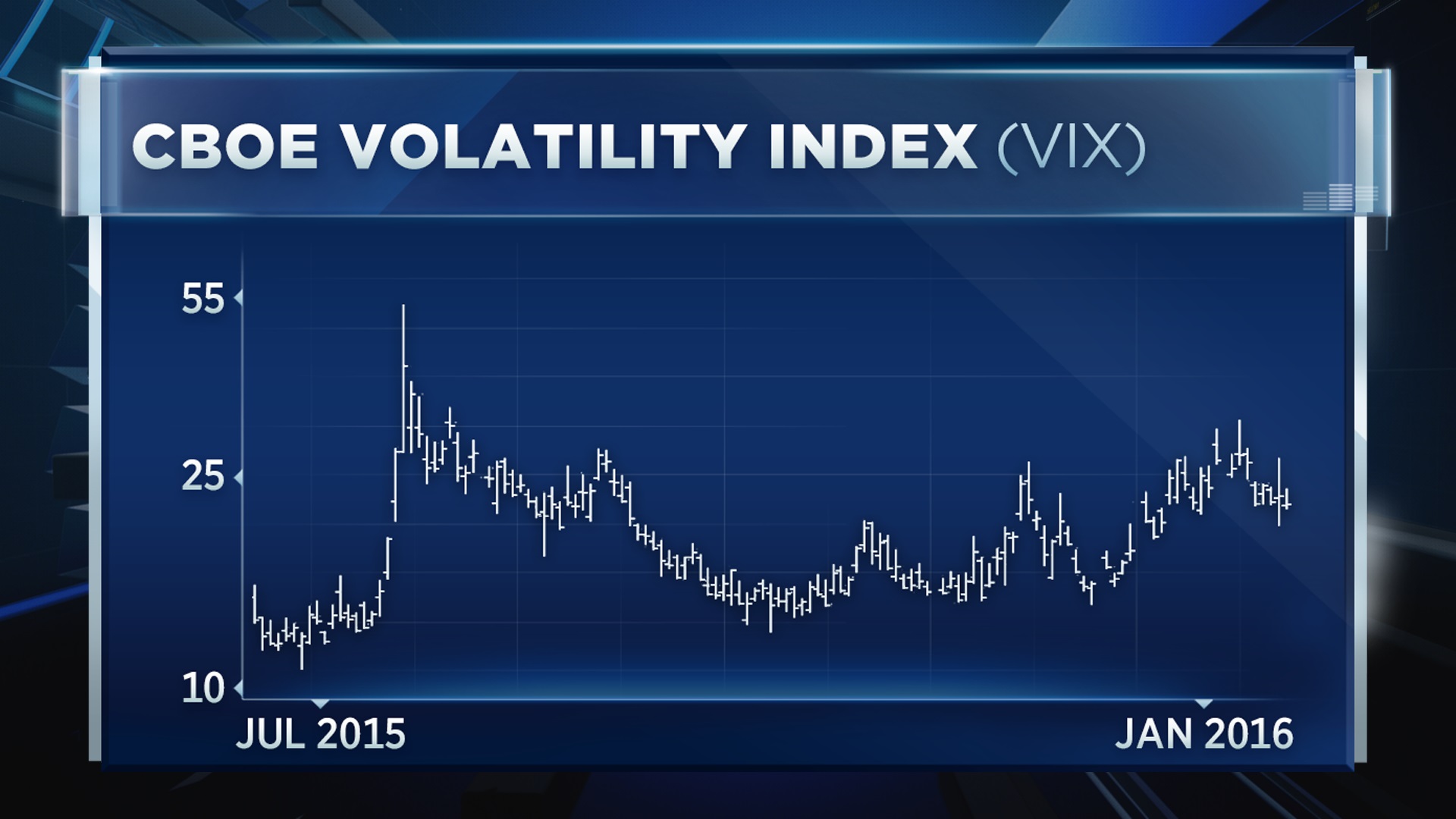Stocks may have managed to eke out small gains in the last trading sessions of the month, but that hasn’t saved the market from what’s been one of the most volatile starts to a year ever.
The S&P 500 is down more than 6 percent in 2016, making it one of the worst Januarys ever for the large-cap index. This occurred as wild swings in crude oil and uncertainty over the global economy have weighed heavily on the equity market. The move has pushed the CBOE Volatility Index, or VIX, above 20 for most of the year. As we head into a new trading month, some traders are betting the heightened volatility could be here to stay.
On Thursday, when stocks closed firmly in the green, someone made a bet that the VIX would stay near current levels through the end of the first quarter. Specifically, that trader sold 57,000 of the March 18/20 put spreads and 57,000 of the March 27/25 call spreads collecting a total of $1.26 per contract. The strategy, which options traders call an iron condor, is essentially betting that the VIX would stay between 20 and 25 through March expiration.
Read MoreFed funds futures pricing no rate hikes in 2016
“After a few years of very low volatility, recently we’ve seen a pretty big uptick in it, and unfortunately it appears traders believe we are going to see more of the same,” Optimize Advisors co-founder Michael Khouw said Thursday on CNBC’s “Fast Money.”
As the S&P 500 traded in a narrow range for most of 2015, the VIX, which trades inversely with the stock market, primarily remained below 20 — with the exception of the August swoon. Super spikes in the VIX tend to correlate with sharp declines in the S&P 500. However, since the start of 2016, the VIX has remained above the key 20 level, prompting many traders to proceed with caution. “We’re well above the five-year average,” added Khouw.

[“source -pcworld”]



